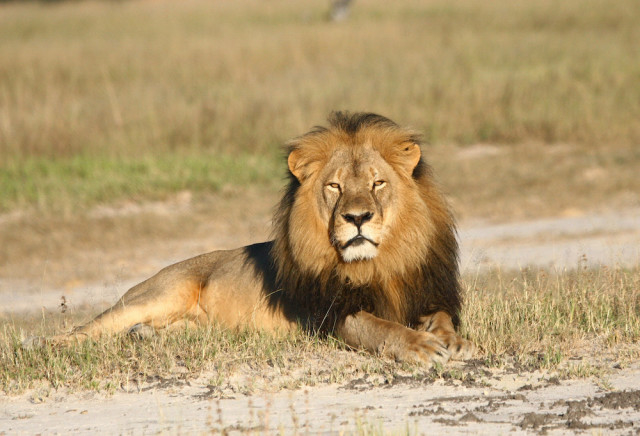The death of Cecil The Lion has the world — or at least what seems like most of the internet — in an uproar. While trophy hunting of lions is nothing new, we wondered: What’s the current state of the lion?
The quick answer is, it depends on which organization you turn to. The World Wildlife Foundation lists the South China tiger as extinct in the wild, leatherback turtles as critically endangered, and brown bears as a least concern as far as conservation status. But while donors can “adopt” a lion, it makes no mention of lions on its species directory. The African Wildlife Foundation lists the big cat as vulnerable. The U.S. Fish and Wildlife Service lists notes Asia’s lions are endangered and has proposed the same status be applied to African lions.
According to National Geographic, some 200,000 lions roamed across Africa a century ago. Today, there are less than 30,000.
And that decline appears to be accelerating. Looking at population data from 1993 to 2014 — about three lion generations — the International Union for Conservation of Nature found a staggering 42 percent drop in the population. That figure varies drastically depending on where the big cats live. Due to conservation efforts and good fences in Botswana, Namibia, South Africa, and Zimbabwe — where Cecil was killed — lion populations have increased by a little over 10 percent.
But outside those four countries, the situation is much more dire — an average of 60 percent population loss.
Professional hunter charged with failure to prevent death of Cecil the lion
In the United States, more than 100,000 people have signed a petition over the killing of Cecil the lion in Zimbabwe. The petition seeks to have the American hunter extradited to Africa to face charges. In Zimbabwe a professional hunter has been charged in the case.
CCTV’s Farai Mwakutuya filed this reports from Harare.

At one time, lions roamed vast swaths of land across Africa and Asia. Now, they are regionally extinct in 26 countries and possibly extinct in seven more according to the IUCN. Humans are essentially the lion’s only predator and are to blame for their endangered status.
“Among the causes, the most important are indiscriminate killing in defense of life and livestock, habitat loss, prey base depletion, bushmeat trade, and poorly regulated sport hunting,” wrote the IUCN’s lion assessors.
If current trends continue, U.S. Fish and Wildlife Service director Dan Ashe warned that lions could dissapear from the earth in 35 years.
What’s going to happen to Cecil the Lion’s pride?
What’s next for the estimated 12 cubs and two lionnesses that made up Cecil’s pride? We posed that question to Johnny Rodrigues, Chairman of the Zimbabwe Conservation Task Force.
“That’s the tragedy about this whole thing,” Rodrigues said. “Cecil was the icon. People remember him.”
All told, Walter Palmer allegedly paid $50,000 to hunt the lion, according to Zimbabwean conservationists. But that pales in comparison to the $1 million each animal could potentially be worth over their lifespan if tourism were expanded, Rodrigues added.

Below is a look at five of the most-endangered animals, ranked according to WWF population data of critically endangered species. The populations of some animals, such as the western lowland gorilla or the Saola are unknown, according to the WWF.
 CGTN America
CGTN America In this undated photo provided by the Wildlife Conservation Research Unit, Cecil the lion rests in Hwange National Park, in Hwange, Zimbabwe. The head of Zimbabwe’s safari association said the killing was unethical and that it couldn’t even be classified as a hunt, since the lion killed by an American dentist was lured into the kill zone. (Andy Loveridge/Wildlife Conservation Research Unit via AP)
In this undated photo provided by the Wildlife Conservation Research Unit, Cecil the lion rests in Hwange National Park, in Hwange, Zimbabwe. The head of Zimbabwe’s safari association said the killing was unethical and that it couldn’t even be classified as a hunt, since the lion killed by an American dentist was lured into the kill zone. (Andy Loveridge/Wildlife Conservation Research Unit via AP)
